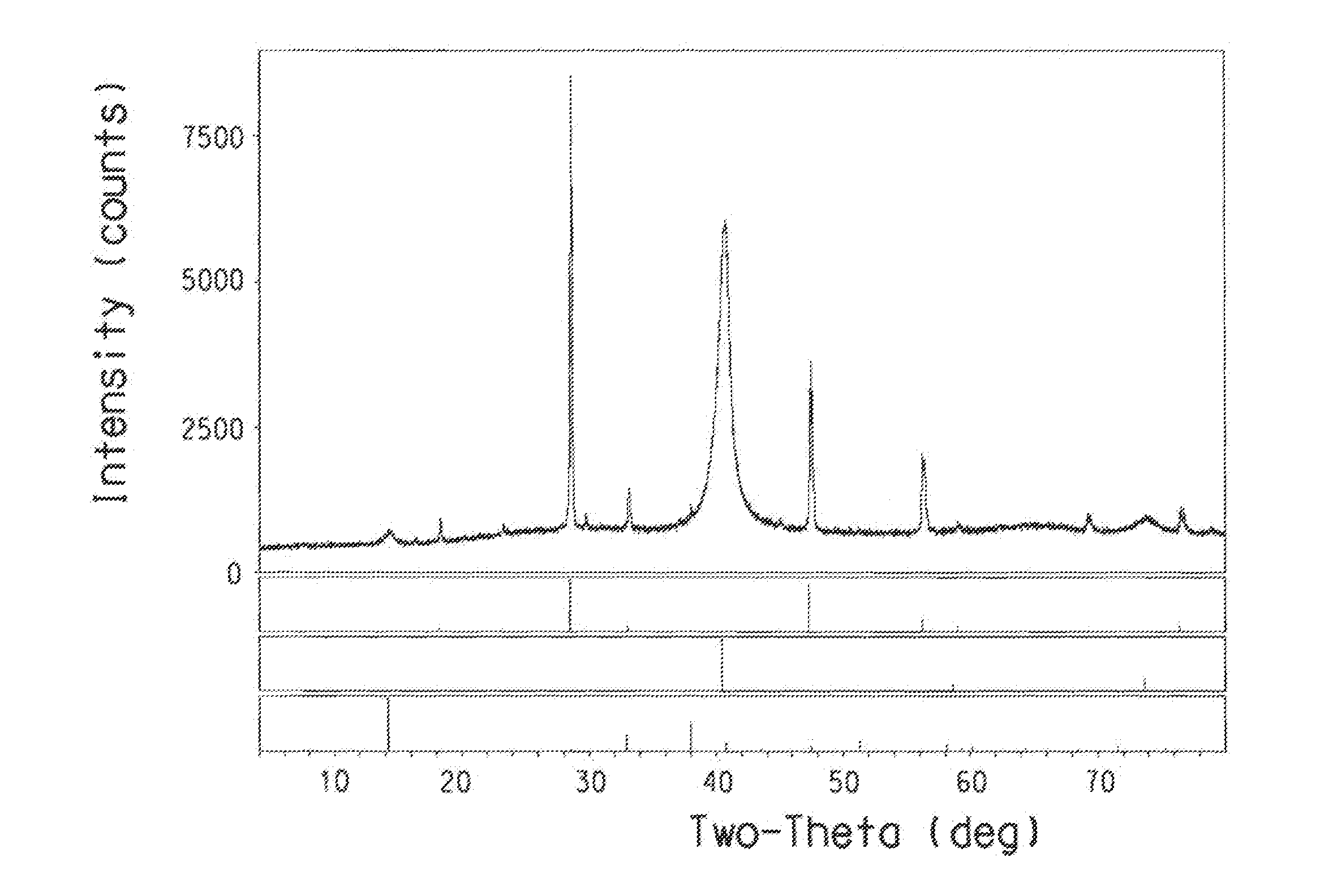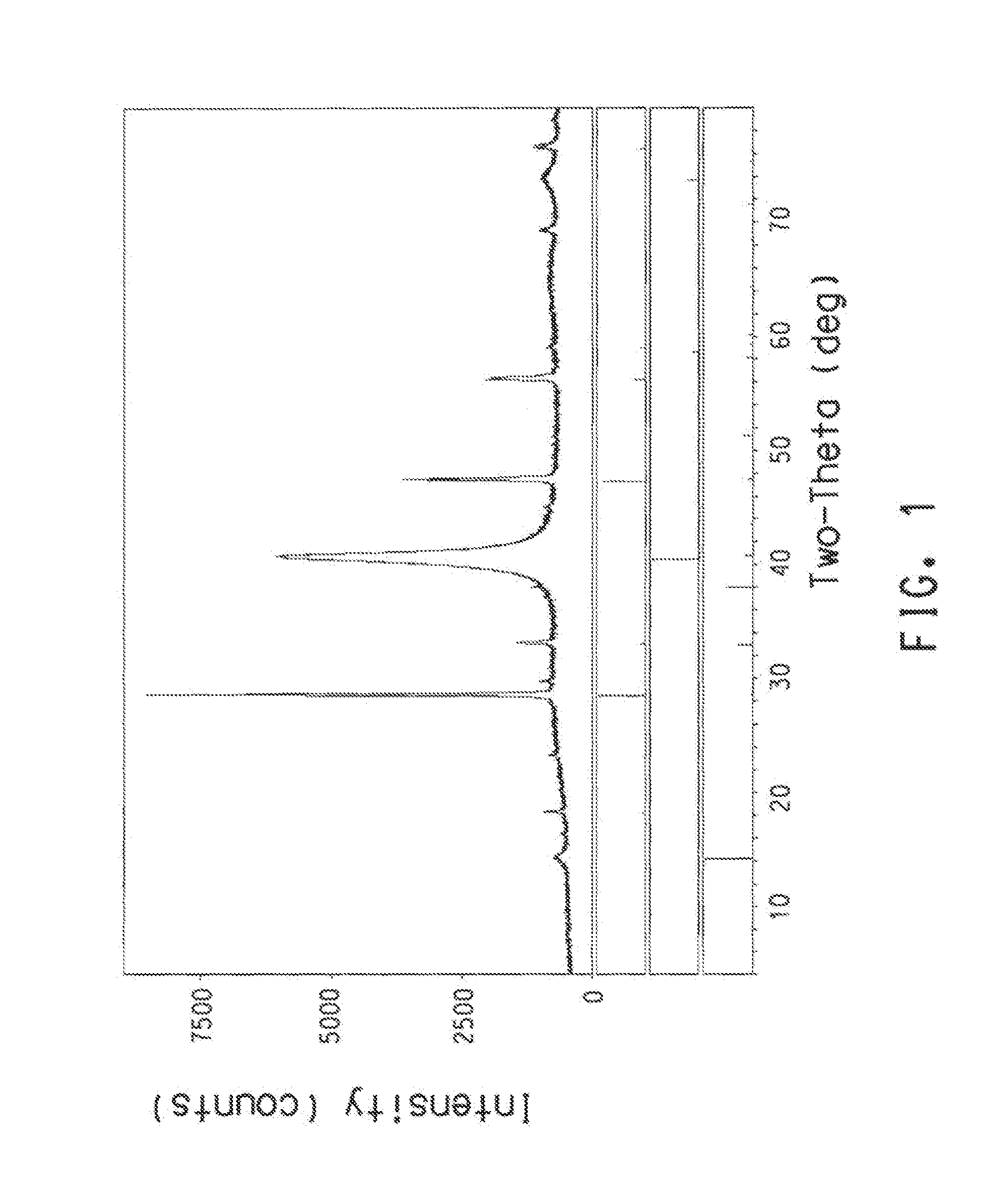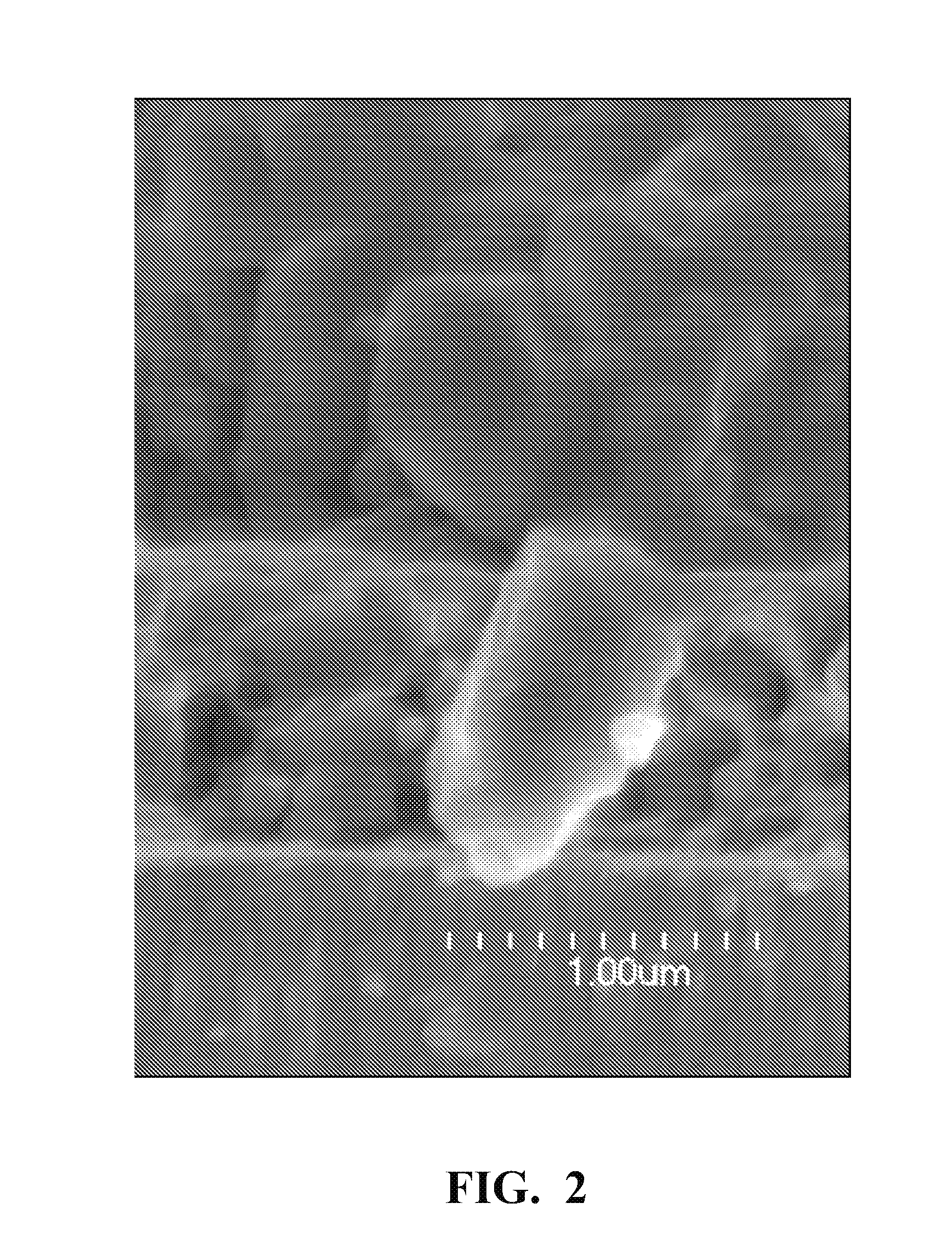Inks and processes to make a chalcogen-containing semiconductor
- Summary
- Abstract
- Description
- Claims
- Application Information
AI Technical Summary
Benefits of technology
Problems solved by technology
Method used
Image
Examples
example 1
[0142]SnS and ZnS nanoparticles (prepared as described above) were individually dispersed in THF at a concentration of 500 mg nanoparticles per mL THF. Each suspension was sonicated in a bath sonicator for 30 min and then with an ultrasonic probe for 10 min. The ZnS suspension was passed through a 1.0 micron syringe filter (Whatman, 1.0 micron GF / B w / GMF). The SnS suspension was passed through a 2.7 micron syringe filter (Whatman, 2.7 micron GF / D w / GMF). Cu nanoparticles (41.9 mg; purified as described above), 0.1540 mL of the ZnS suspension and 0.3460 mL of the SnS suspension were mixed, and the resulting mixture was then sonicated in a bath sonicator for 20 min. This ink was agitated strongly immediately prior to deposition. The ink was spin-coated onto Mo-coated glass substrates by spinning at 1000 rpm for 20 sec and then spinning at 1500 rpm for 10 sec. Then the sample was annealed in a tube furnace at 550° C. for 1 h in N2 and then at 500° C. for 1 h in a sulfur / N2 atmosphere. ...
example 1a
[0143]A coated substrate was prepared according to the procedure of Example 1. Profilometry of the surface was acquired in 5 different locations using a Tencor profilometer and the data was processed with a 25 micron low-pass filter, giving an average height of 1.0715 microns, an average Ra of 460 nm, and an average Wa of 231 nm for the coated substrate.
example 2
[0144]A CZTS precursor ink was prepared by dispersing commercial Sn nanosize activated powder (99.7%, 176.5 mg) from Sigma Aldrich and TEGO IL P51P (10.2 mg) in toluene (2258 mg). The dispersion was then sonicated in an ultrasonic bath for 15 min. Then CuS particles (298.9 mg) and ZnS particles (274.6 mg) were added to the Sn powder suspension. The mixture was further sonicated for 30 min in an ultrasonic bath. The CZTS precursor dispersion was spun-coated onto a molybdenum-coated glass substrate. The ink was applied to the substrate. Then the sample was spun at 200 rpm for 10 sec, followed by spinning at 350 rpm for 30 sec and a final spinning at 600 rpm for 10 sec. The coated substrate was then dried in the air at room temperature. The coated substrate was then annealed in a tube furnace at 500° C. for 2 h in a sulfur / N2 atmosphere. XRD results indicate that CZTS is the major phase in the annealed film.
PUM
| Property | Measurement | Unit |
|---|---|---|
| Molar ratio | aaaaa | aaaaa |
| Semiconductor properties | aaaaa | aaaaa |
Abstract
Description
Claims
Application Information
 Login to View More
Login to View More - R&D
- Intellectual Property
- Life Sciences
- Materials
- Tech Scout
- Unparalleled Data Quality
- Higher Quality Content
- 60% Fewer Hallucinations
Browse by: Latest US Patents, China's latest patents, Technical Efficacy Thesaurus, Application Domain, Technology Topic, Popular Technical Reports.
© 2025 PatSnap. All rights reserved.Legal|Privacy policy|Modern Slavery Act Transparency Statement|Sitemap|About US| Contact US: help@patsnap.com



